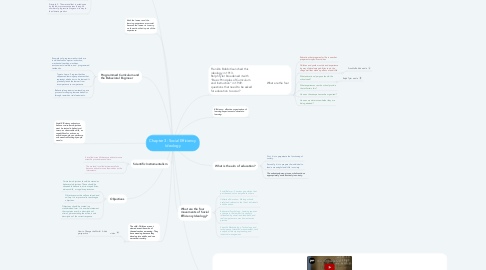Chapter 3: Social Efficiency Ideology
by Stormie Corwin


1. Social Efficiency educators believe curriculum objectives must be stated in behavioral terms: as observable skills, as capabilities for actions, as activities people can perform,a s demonstrable things people can do.
2. Both the learner and the learning experience are crucial because the learner is to carry on the action that is part of the experience.
3. Programmed Curriculum and the Behavioral Engineer
3.1. Examples of programmed curricula are individualized computer instruction, mechanical teaching machines, environment simulators, and programmed textbooks.
3.2. Type to Learn - Program that has sequenced learning experiences that represent a behavior to be learned. It gradually leads the learner from incompetence to competence.
3.3. Behavioral engineers view teaching as a process for shaping learners behavior through rewards or reinforcements.
4. What is the real view of Social Efficiency Ideology? The Analogy
4.1. Bobbit compared the school to a factory. The child is the raw material. The adult is the finished product. The teacher is the factory worker. The curriculum is what is processing the raw material to change it into the finished product.
4.2. Society determines the objectives because they will need the finished product. Educators determine the most efficient way of producing it.
4.3. Principle 1 - Definite qualitative and quantitative standards must be determined for the product.
4.4. Principle 2 - The material that is acted upon by the labor processes passes througha number of progressive stages on its way to the ultimate product.
5. Scientific Instrumentalism
5.1. It is called scientific because educators use scientific procedures and data.
5.2. The method is called instrumentalistic because educators see themselves as the instruments.
6. Objectives
6.1. Curriculum objectives should be stated as behavioral objectives. These should be observable behaviors, action capabilities, actions skills, or cognitive processes.
6.2. Objectives must be self-contained and unitary. It is impractical to teach vague objectives.
6.3. Objectives should be stated in a standardized form. It is a verbal statement that contains a verb, a description of stimuli, phrase stating the action, and a description of the correct response.
7. The child: Children are not viewed as entities who of themselves have meaning. They have meaning because they develop into adults, and can serve their society.
7.1. How to Change the World: A kids perspective video
8. Efficiency - effective organization of learning experiences to stimulate learning.
9. Franklin Bobbit launched this ideology in 1913. Ralph Tyler broadened it with "Basic Principles of Curriculum and Instruction" in 1949. What are the four questions that need to be asked for education to occur?
9.1. Education that prepares for life is one that prepares for specific activities
9.2. Children and youth must do and experience by way of developing abilities to do the things well that make up affairs of adult life.
9.2.1. Franklin Bobbit article
9.3. What educational purpose should the school seek?
9.3.1. Ralph Tyler article
